
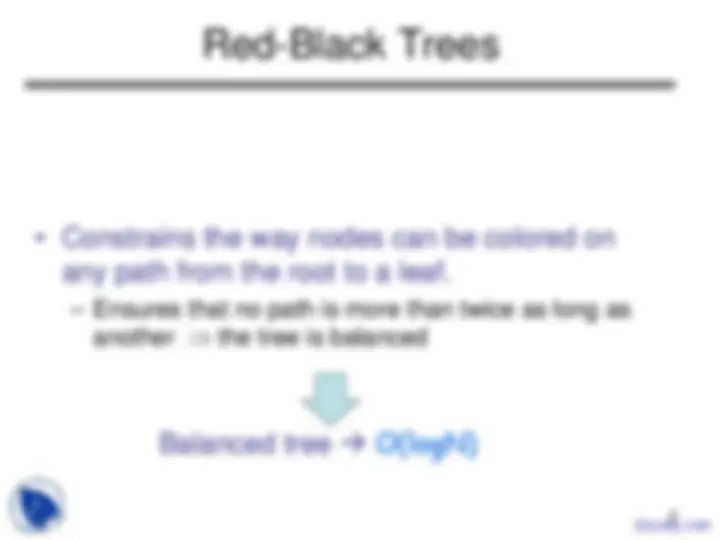
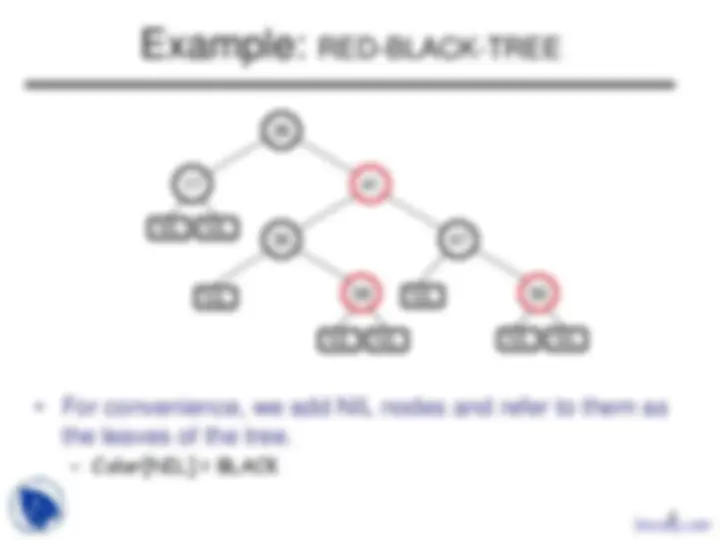
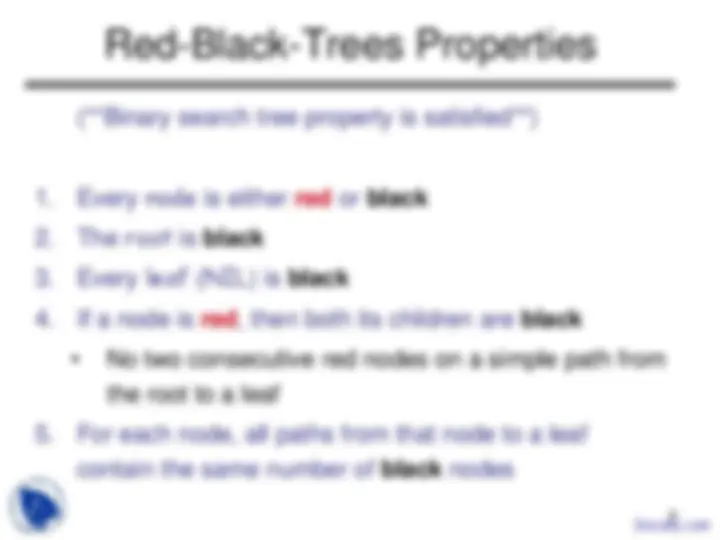
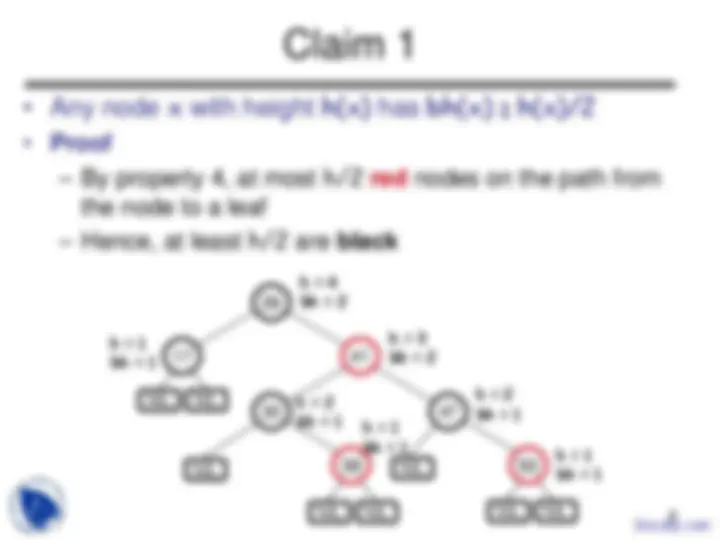
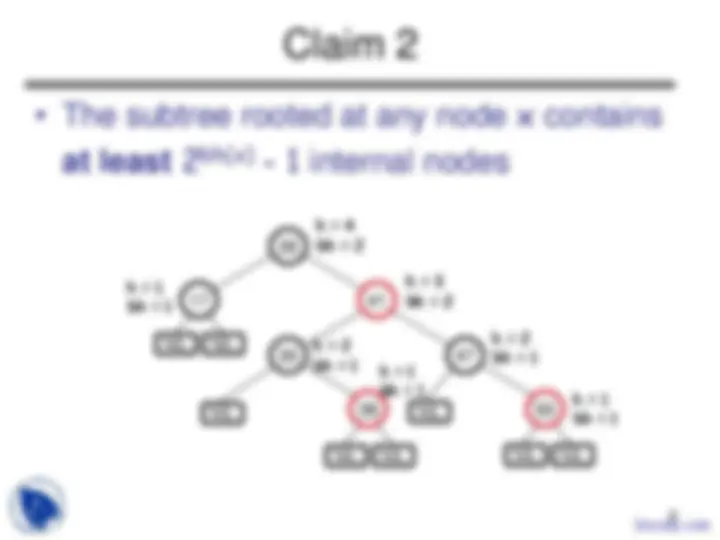
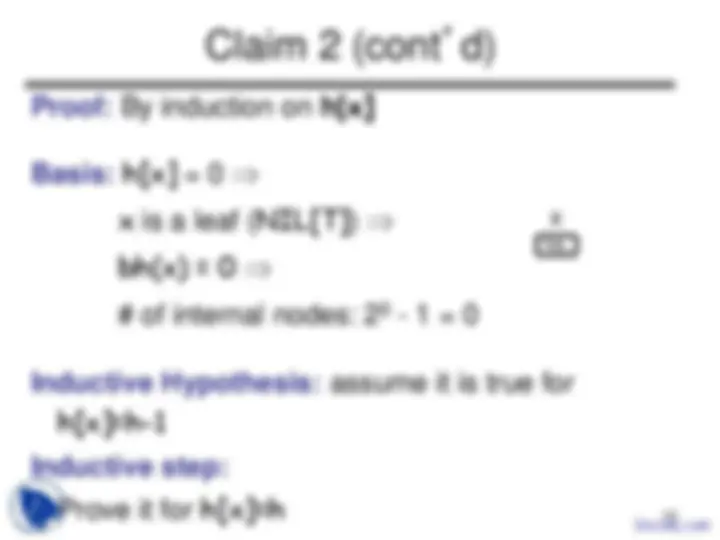
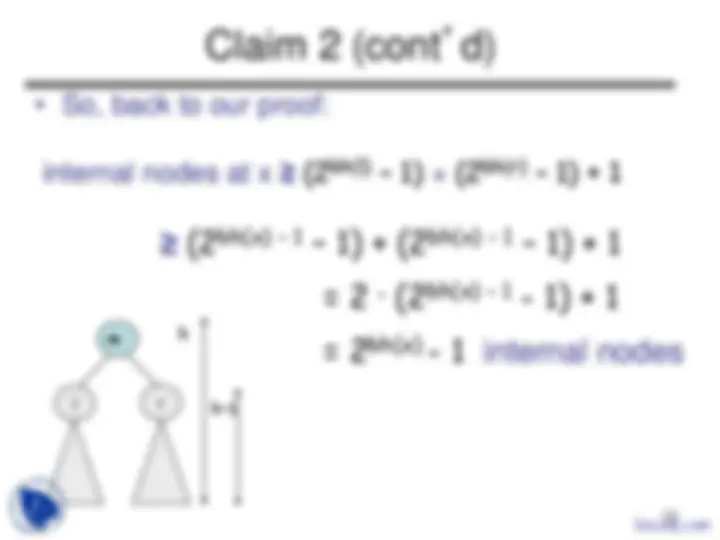
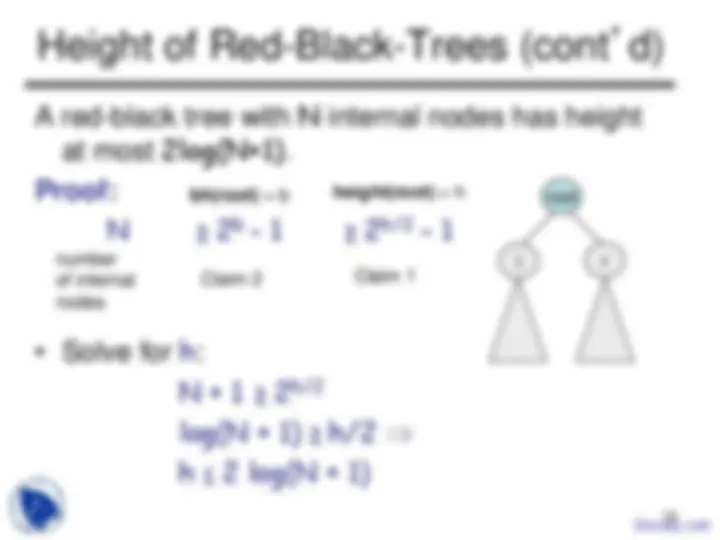
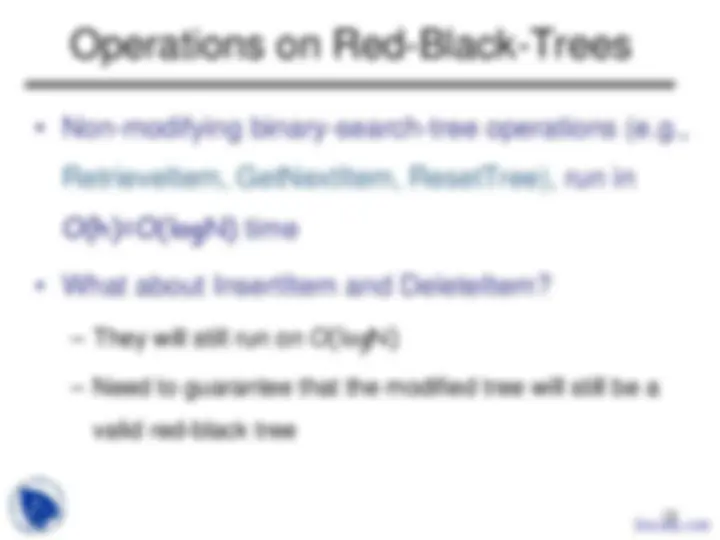
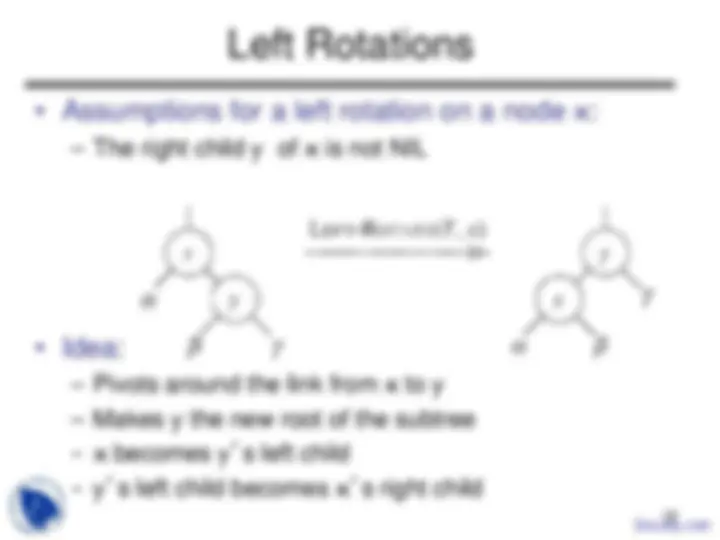
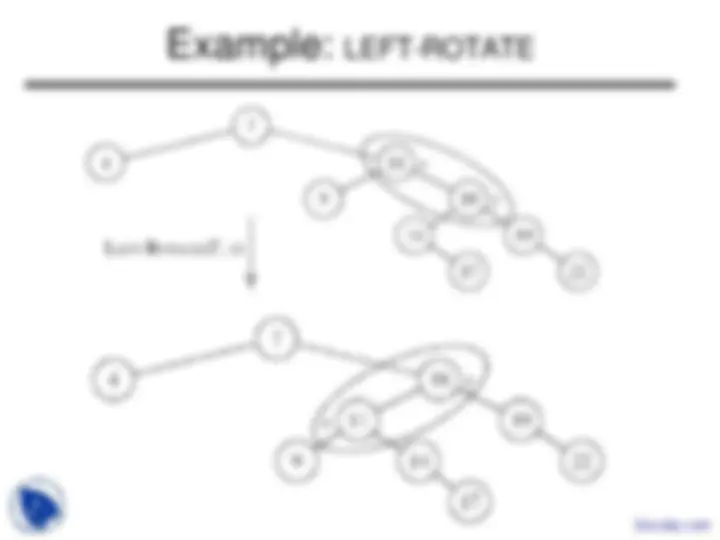
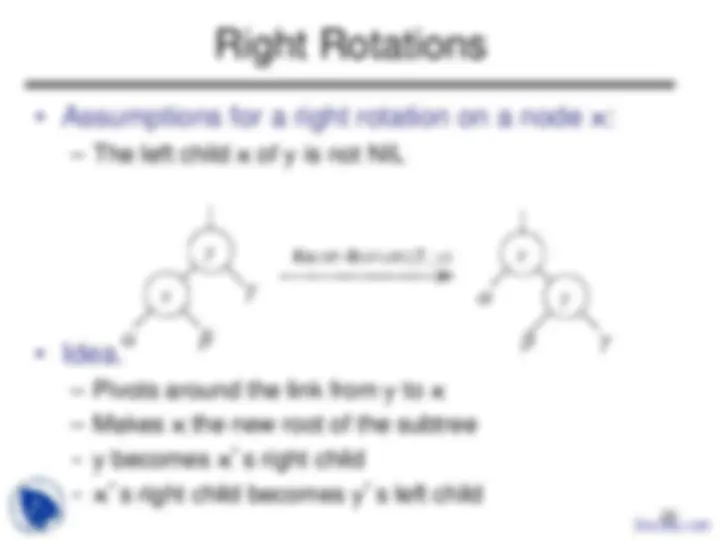
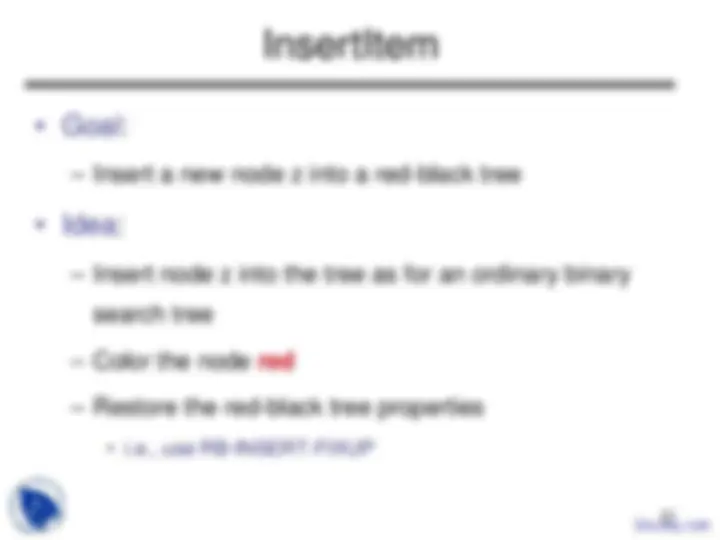
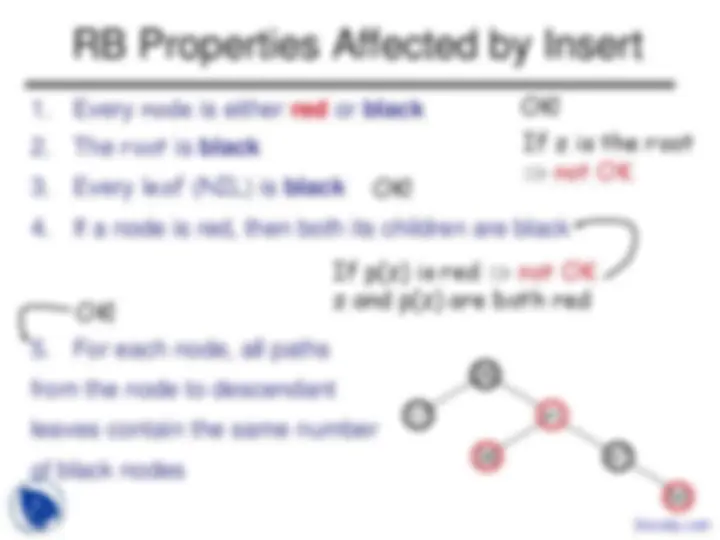
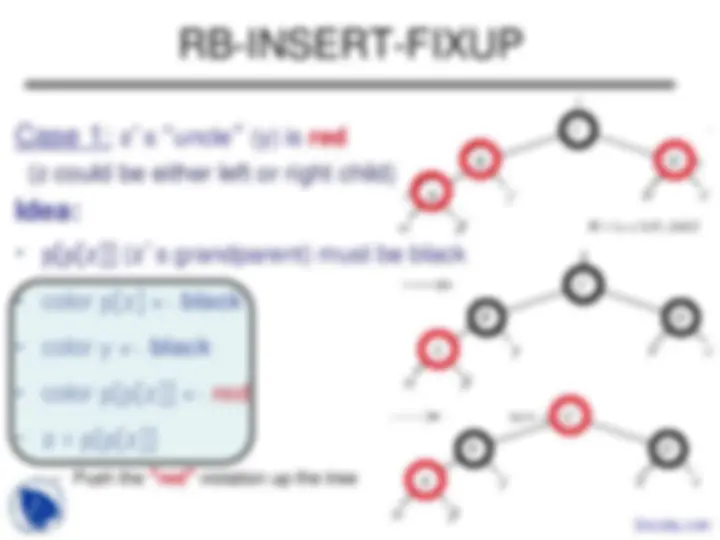
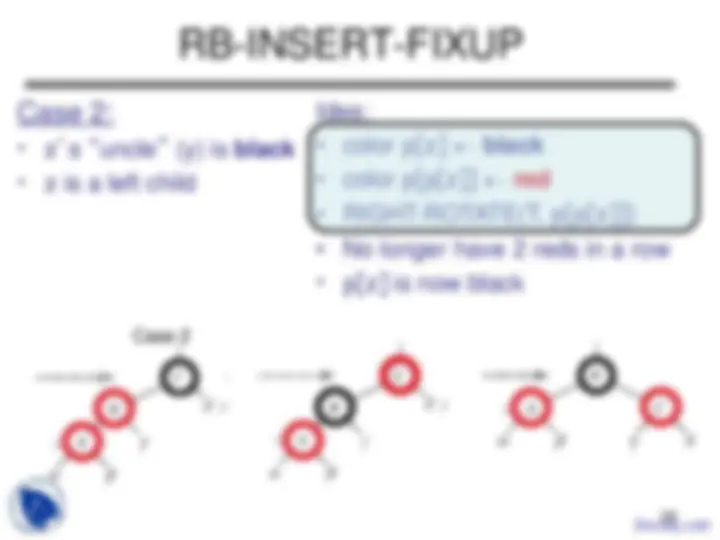
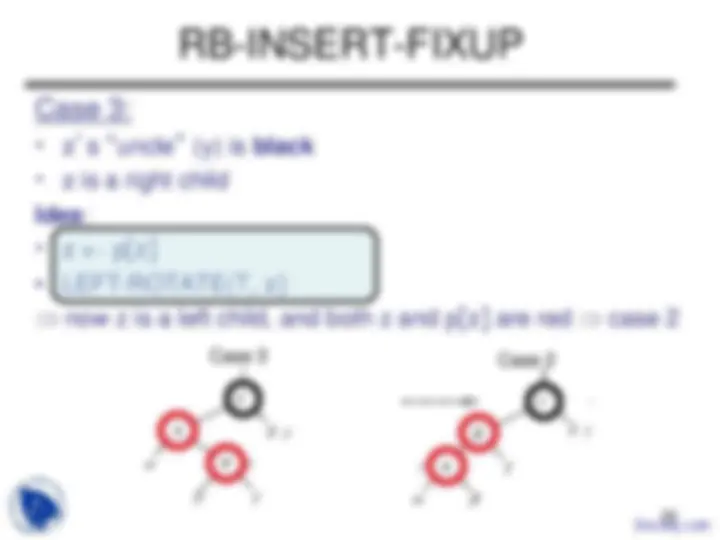
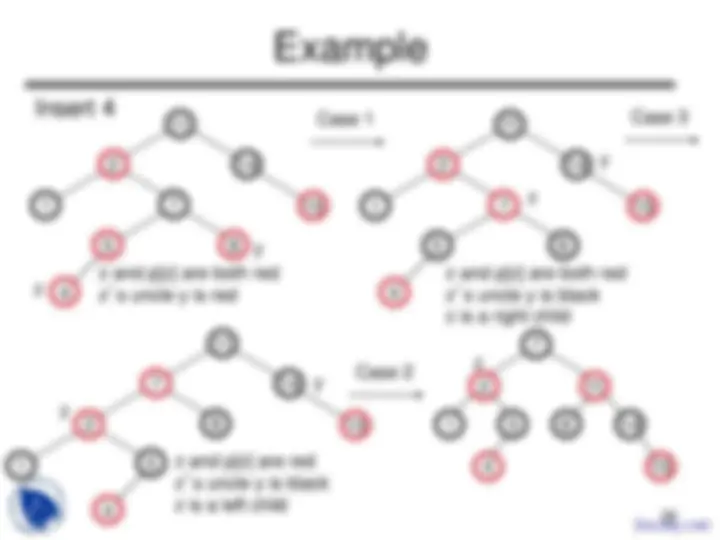
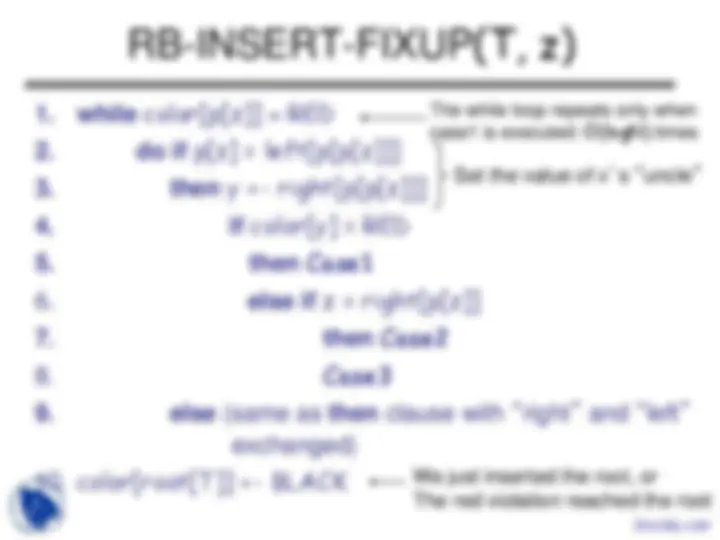
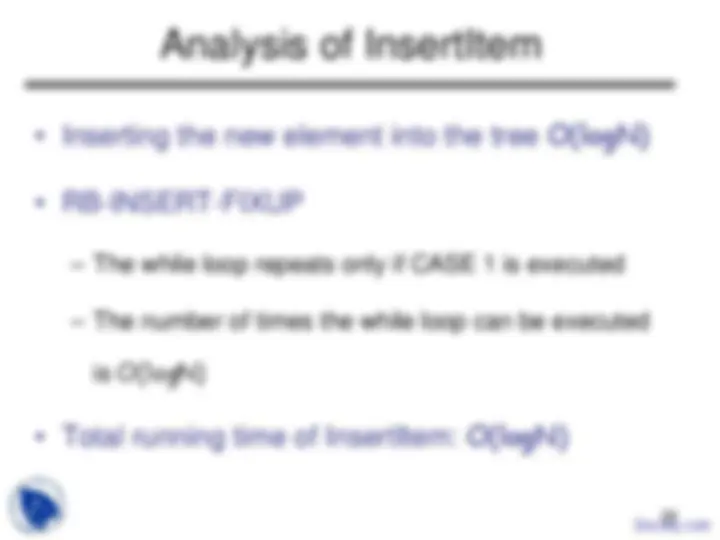

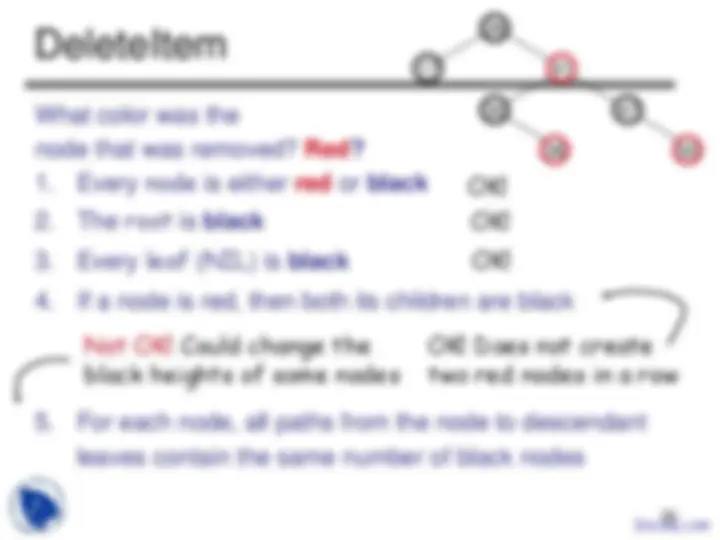
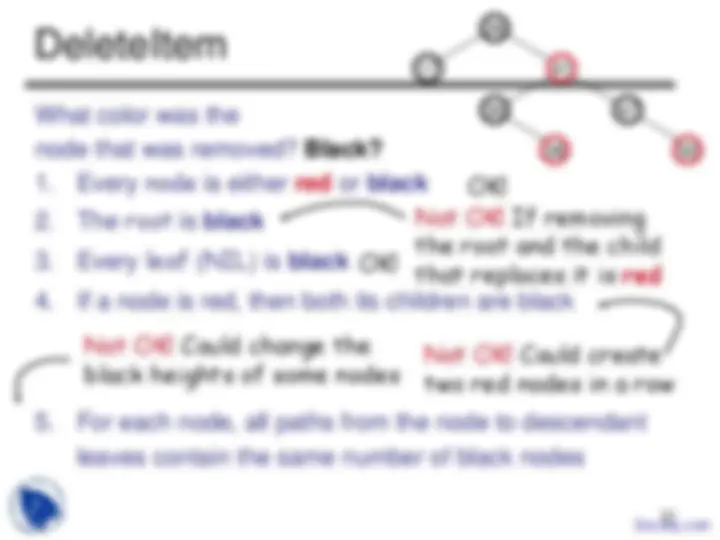
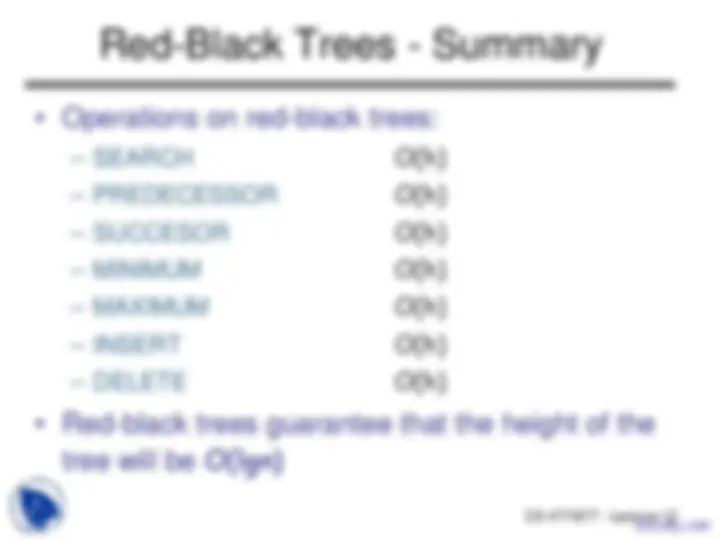
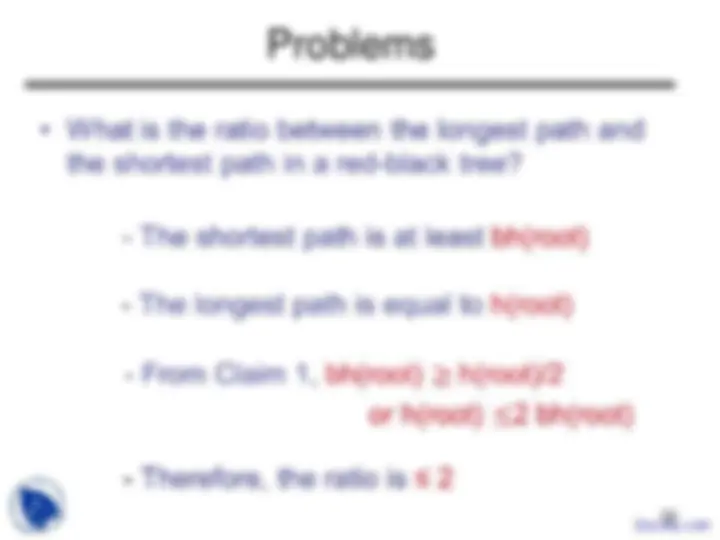
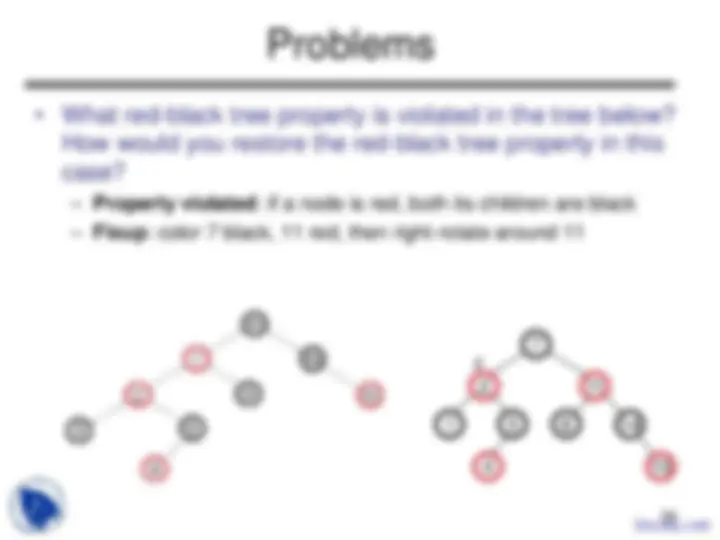
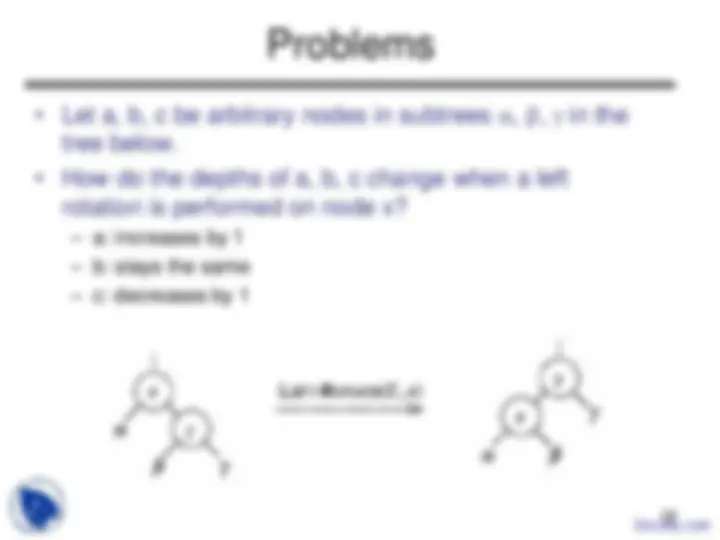
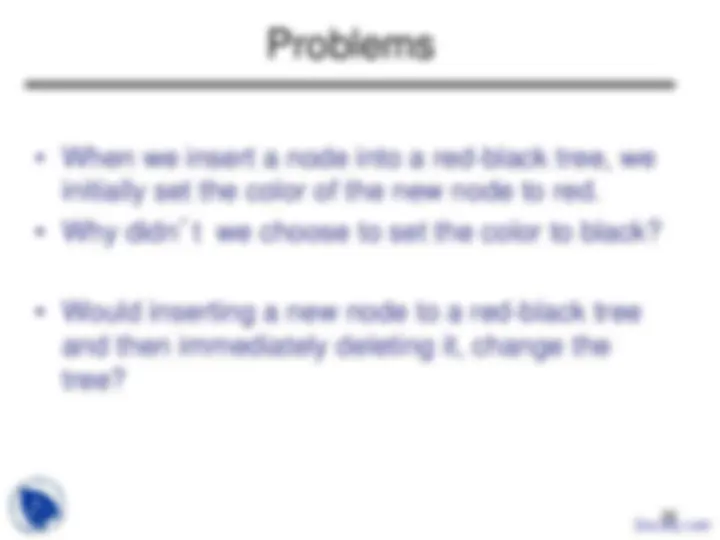


Study with the several resources on Docsity

Earn points by helping other students or get them with a premium plan


Prepare for your exams
Study with the several resources on Docsity

Earn points to download
Earn points by helping other students or get them with a premium plan
Community
Ask the community for help and clear up your study doubts
Discover the best universities in your country according to Docsity users
Free resources
Download our free guides on studying techniques, anxiety management strategies, and thesis advice from Docsity tutors
In the subject of the Data Structures, the key concept and the main points, which are very important in the context of the data structures are listed below:Red-Black Trees, Balanced, Guarantee, Binary Tree, Additional Attribute, Balanced Tree, Tree Is Balanced, Convenience, Nodes, Root Is Black
Typology: Slides
1 / 36

This page cannot be seen from the preview
Don't miss anything!





























2
26
17 41
30 47
38 50
NIL NIL
NIL NIL NIL NIL^ NIL
NIL
(Binary search tree property is satisfied)
contain the same number of black nodes
Height of Red-Black-Trees
26
17 41
30 47
38 50
NIL NIL
NIL NIL NIL NIL^ NIL
NIL
h = 4 bh = 2 h = 3 bh = 2 h = 2 bh = 1 h = 1 bh = 1
h = 1 bh = 1 h = 2 bh = 1 (^) h = 1 bh = 1
NIL
x
x
l r
h
h-
x
l r
h
h-
root
l r
bh(root) = b^ height(root)^ = h
number of internal nodes
Claim 2 Claim 1
16
17 41
30 47
38 50
19